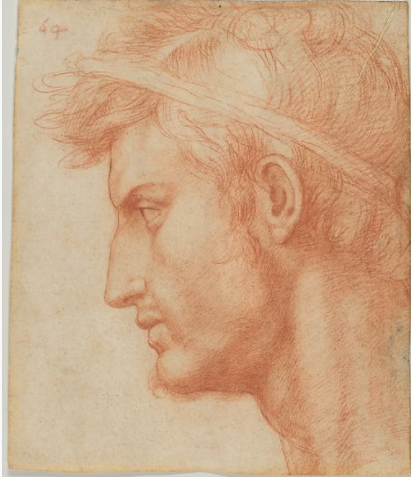
The drawing Study for the Head of Julius Caesar by Andrea del Salto is a red chalk portrait of Julius Caesar. His face presents a profile but does not appear as angular and rigid as profile images of political figures of the ancient era usually do. The image is based on the design of marble sculptures or coins depicting Roman emperors that were popular throughout the Renaissance (“Study for the Head of Julius Caesar,” 2022). Caesar’s face, particularly his long aquiline nose, was drawn with a crisp, generally continuous outline and then strengthened, but the remainder of the head is more freely done, with softer curves and precise interior contouring.
The artist’s passion for getting these aspects perfect is seen by the faint exploratory lines down the profile, particularly the nose. The painting, commissioned by Pope Leo X and his half-brother Cardinal Giulio de’ Medici, confirmed Sarto’s standing as Florence’s preeminent painter shortly after he returned from a tour to the French court in 1518 (“Study for the Head of Julius Caesar,” 2022). It thus reflects on the Renaissance fascination with historical figures of Ancient Rome and Greece. The provided information gives an insight into the historical context and the general fate of the painting.
I consider this work to be important and meaningful because of its delicate, almost personal approach to the grandiose figure of the Roman emperor. In this image, he is presented as a person significantly more than as a politician, which separates this portrait from the sculptures and the coins it is inspired by. Both politically and historically, this take on Julius Caesar is remarkable due to the way it partially subverts the myth around him. Perhaps, the ability to provide a glimpse into someone’s personal space is an overall signifier of a well-done portrait.
Reference
Study for the Head of Julius Caesar (N/D). Metmuseum.org. Web.